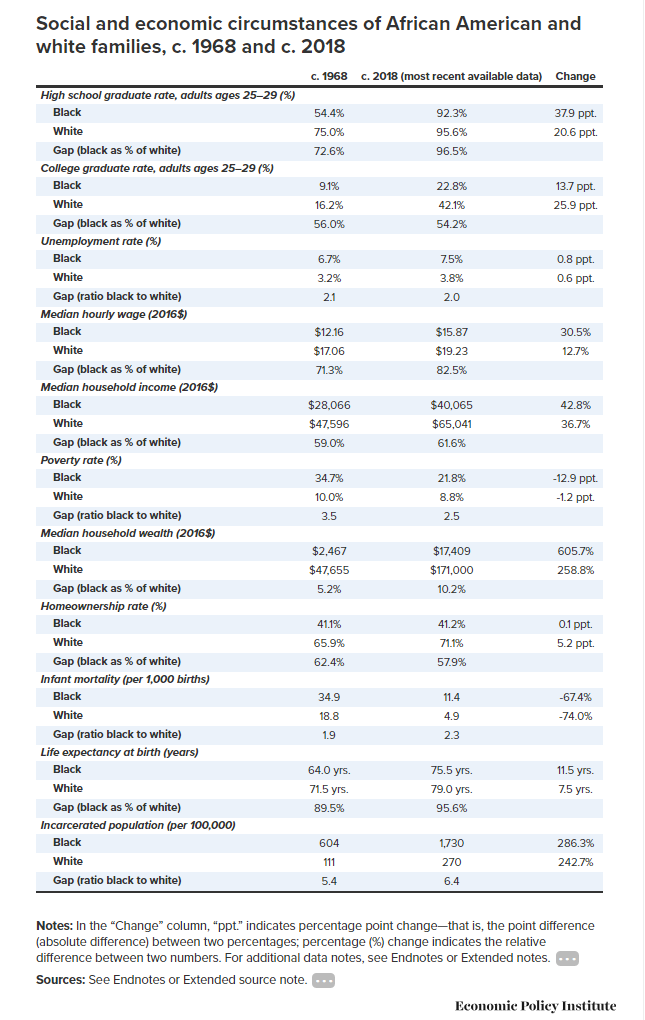50 years after the Kerner Report Black workers are still racially disadvantaged

Economic Policy Institute - The year 1968 was a watershed in American history and black
America’s ongoing fight for equality. In April of that year, Martin Luther King
Jr. was assassinated in Memphis and riots broke out in cities around the
country. Rising against this tragedy, the Civil Rights Act of 1968 outlawing
housing discrimination was signed into law. Tommie Smith and John Carlos raised
their fists in a black power salute as they received their medals at the 1968
Summer Olympics in Mexico City. Arthur Ashe became the first African American
to win the U.S. Open singles title, and Shirley Chisholm became the first
African American woman elected to the House of Representatives.
The same year, the National Advisory Commission on Civil
Disorders, better known as the Kerner Commission, delivered a report to
President Johnson examining the causes of civil unrest in African American
communities. The report named “white racism”—leading to “pervasive
discrimination in employment, education and housing”—as the culprit, and the
report’s authors called for a commitment to “the realization of common
opportunities for all within a single [racially undivided] society.”1 The
Kerner Commission report pulled together a comprehensive array of data to
assess the specific economic and social inequities confronting African
Americans in 1968.
Where do we stand as a society today? In this brief report,
we compare the state of black workers and their families in 1968 with the
circumstances of their descendants today, 50 years after the Kerner report was released.
We find both good news and bad news. While African Americans are in many ways
better off in absolute terms than they were in 1968, they are still
disadvantaged in important ways relative to whites. In several important
respects, African Americans have actually lost ground relative to whites, and,
in a few cases, even relative to African Americans in 1968.
Following are some of the key findings:
· + African Americans today are much better educated than they were in 1968 but still lag behind whites in overall educational attainment. More than 90 percent of younger African Americans (ages 25 to 29) have graduated from high school, compared with just over half in 1968—which means they’ve nearly closed the gap with white high school graduation rates. They are also more than twice as likely to have a college degree as in 1968 but are still half as likely as young whites to have a college degree.
+ The substantial progress in educational attainment of
African Americans has been accompanied by significant absolute improvements in
wages, incomes, wealth, and health since 1968. But black workers still make
only 82.5 cents on every dollar earned by white workers, African Americans are
2.5 times as likely to be in poverty as whites, and the median white family has
almost 10 times as much wealth as the median black family.
+ With respect to homeownership, unemployment, and incarceration,
America has failed to deliver any progress for African Americans over the last
five decades. In these areas, their situation has either failed to improve
relative to whites or has worsened. In 2017 the black unemployment rate was 7.5
percent, up from 6.7 percent in 1968, and is still roughly twice the white
unemployment rate. In 2015, the black homeownership rate was just over 40
percent, virtually unchanged since 1968, and trailing a full 30 points behind
the white homeownership rate, which saw modest gains over the same period. And
the share of African Americans in prison or jail almost tripled between 1968
and 2016 and is currently more than six times the white incarceration rate.

